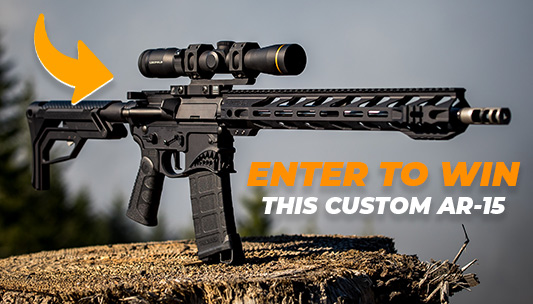Uncategorized
No Excuses First Aid Kit For the Gun Range
Published
1 year agoon
Range First Aid: DIY Trauma Kit
Many shooting-related injuries just need a “boo-boo kit”: antiseptic wipes or an antibiotic cream, a
handful of Band-Aids, and some medical tape. As shooters, we are more likely to see the kind of medical
mishaps covered by a basic first aid class than a major trauma like a gunshot wound or even a severe cut
or fall.
We’ve already talked a bit about how to manage range emergencies, but what about that time between
the injury and an ambulance arriving?
The consequences of major trauma and the need for immediate treatment while waiting for more well-
equipped response make it important to shooters to learn first-line treatment and have appropriate
supplies with them at all times. Nothing substitutes for training, and that should be your first priority.
However, it’s still a good idea to have the right tools with you even if you haven’t made it to a trauma
first aid class yet.
From personal experience, I know it can be confusing and expensive to figure out what kind of kit to
buy. There are some great pre-made kits out there like the ones available from Imminent Threat
Solutions, but I was hoping for something small and cheap enough to have no excuses to own and carry
yet still be effective. I don’t have any professional affiliation with any company I mention here except for
PHLster, a long-time sponsor. Mistakes here are my own, not those of the experts I consulted with.
[Insert image 1 – The author’s new complete DIY trauma kit]
PHLster recently introduced an innovative way to store and carry a tourniquet: the Flatpack. Not much
larger than a credit card, I thought it might be a good basis for a kit after seeing Greg Ellifritz’s Everyday
Carry of Trauma Medical Gear post.
Here’s what I came up with the help of Morgan Atwood, principal at BFE Labs and others:
Flatpack Tourniquet Carrier
SOFTT-W tourniquet
H&H Medical flat compressed gauze
Nitrile gloves in a small plastic bag
Duct tape
[Insert image 2 – Elements of a basic, but complete, trauma response]
[Insert image 3 – The main kit packs up compactly]
With some creative arrangement and removal of the Flatpack belt loops, I made one compact package
that I can Velcro to my range bag.
[Insert image 4 – Velcro allows the main kit to be easily accessible in any range bag]
Both the SOFTT-W and CAT tourniquets come highly recommended, and I went with the SOFT-T because
it folds up slightly flatter. With this kit, every bit of space is at a premium. I pair it with a pressure
dressing for additional options.
Those of you who have some background in trauma medicine might wonder why I haven’t included any
hemostatic gauzes, such as Quikclot. While they can be very effective and can be found in very small
packages, they are also expensive and less costly products such as plain gauze can be nearly as good for
immediate response. My kit uses gauze so that you can’t use money as an excuse not to build this kit.
Gloves are an essential part of any first aid kit to prevent possible contact with other peoples’ bodily
fluids. In fact, paramedic Jon Blatman believes gloves are so necessary that you should always have a
pair with you, since your hands can do a lot even if you don’t have any other gear. A big box of gloves
costs less than $10-$20 and can be used for everything from first aid to keeping your hands safe from
cleaning solvents. Nitrile is better than latex in case of allergies. Here, they’re in a plastic bag to help
protect them and so that the bag can be improvised into an occlusive bandage. That’s one of the many
reasons flat-wrapped duct tape is included in the kit.
[Insert image 5 – Gloves in particular are a vital part of the kit]
For a more complete. but somewhat larger and more expensive kit, former paramedic Marc Seltzer of
Officer Store and Armed Dynamics suggests attaching the Flatpack to a simple AR magazine carrier such
as this one from Voodoo Tactical or a small pouch like this Condor Utility Pouch, and adding an H&H
Mini Compression Dressing, a mini chest seal, and more plain or hemostatic gauze. I added a PerSys
Medical 4” WoundStop dressing and a North American Rescue (Flat) Emergency Trauma Dressing to
mine, as a midway point between plain and hemostatic gauze.
[Insert image 6 – Bonus kit contents, and packed up]
Components for my kit can be found at Rescue Essentials, or at Officer Store, under the Medical Supplies
section. The Flatpack itself is available by itself or in combo packs with tourniquets from PHLster dealers.
So there you go – get some training, buy or put together a trauma kit, and be safe on the range!
Further reading: http://blog.opencolleges.edu.au/mhm-how-to-help-someone-suffering-post-traumatic-stress-disorder/
You may like

CZ 75 SP01 Tactical Gun Review | Gun Carrier

PODCAST: Gun Law Changes All Across America Right Now

PODCAST: How to Win Olympic Gold

PODCAST: 50 Important Ideas For Self-Defense, Self-Reliance, and Personal Safety

10 Best Gun Safes In 2022 | Gun Carrier

DP-12 | Double Barrel Pump Shotgun Gun Full Review


